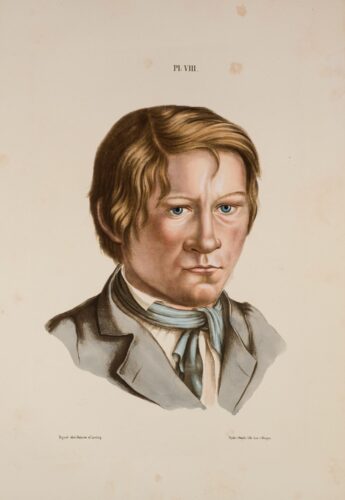‘Atlas Colorié de Spedalskhed’
The collection of plates ‘Atlas Colorié de Spedalskhed’ accompanies the book ‘On Leprosy’ published in 1847, written by the physicians Daniel C. Danielssen and Carl Wilhelm Boeck. The book is the first modern description of leprosy and made it possible to distinguish leprosy from other diseases that can cause similar symptoms or injury.
The atlas contains 24 colour plates showing the external characteristics of the disease as they appeared on the residents of St. Jørgen’s Hospital in the 1840s. Some of the plates show organs and specimens from the autopsies conducted at the hospital. The drawings were made by the artist and lithographer Johan Ludvig Losting, partly based on sketches drawn by others.
When Danielssen was given a permanent position at St. Jørgen’s Hospital in early 1841, one of his duties was to carry out autopsies. He was also to preserve specimens that exhibited the most typical signs of the disease. If this was not possible, they were to be drawn. At Boeck’s suggestion, Losting was hired as an illustrator.
When the decision was made that ‘On Leprosy’ would be accompanied by illustrations, Losting’s watercolours were engraved in Prahl’s lithographic workshop in Bergen so that the atlas could have colour plates.
Eight of the plates show portraits of residents at St. Jørgen’s. Despite the book containing many observations of named individuals, we do not know the identities of those depicted in the atlas. This is most likely due to the fact that the goal of the illustrations was not to recognise the patients as individuals, but to give a clearer picture of the disease itself. Losting’s lithographs were based on medical observations, where the main goal was to present common symptoms in order to advance understanding of the disease.

Johan Ludvig Losting. Atlas Colorié de Spedalskhed. 1847. The University of Bergen Library.

Johan Ludvig Losting. Atlas Colorié de Spedalskhed. 1847. The University of Bergen Library.

Johan Ludvig Losting. Atlas Colorié de Spedalskhed. 1847. The University of Bergen Library.



